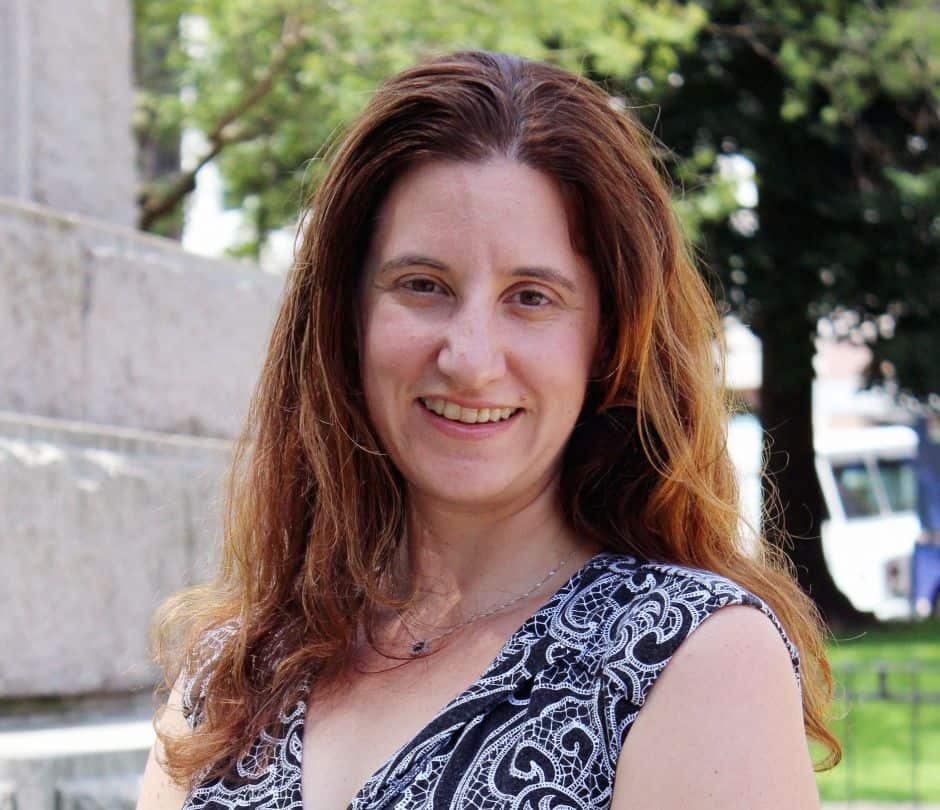This article is published in partnership with FiveThirtyEight.
Introduction
Democratic presidential candidates love small-dollar donors — and they want you to know it.
When Bernie Sanders’s campaign announced its first-quarter haul, the $18.2 million total — which put the senator from Vermont at the top of a growing gaggle of Democratic presidential candidates — wasn’t the number the campaign seemed most excited about.
Rather, staffers stressed that more than $8 out of every $10 raised had come from donors giving $200 or less. And that small-dollar metric is the one that campaign manager Faiz Shakir said that “we would like other campaigns to be judged on.”
The Sanders campaign wasn’t the only one trying to sell a narrative focused on small-dollar donors. South Bend, Indiana, Mayor Pete Buttigieg’s campaign touted his average contribution of $36.35. The campaign of Sen. Elizabeth Warren, D-Mass., highlighted the number of donors contributing and an average contribution of $28. Beto O’Rourke’s campaign noted the candidate wasn’t “taking a dime from PACs, special interests, lobbyists and corporations.” And so on.
Democratic presidential primary candidates are competing to be the candidate of the small donor in part because Sanders and others have shown it’s a viable route and a friendly narrative.
“We’re seeing a new state in campaigning where no one has to be convinced that you can raise a lot of money online and you can raise it through small donations,” said Tim Lim, a digital consultant who has worked on Democratic campaigns.
The party, meanwhile, is strongly encouraging the small donor prospecting by setting a minimum grassroots fundraising threshold as one of two ways to qualify for the first two Democratic National Committee-sanctioned debates this summer. As candidates have turned away from other types of fundraising, some have warned the party will eventually need every available dollar — big and small — to deny President Donald Trump a second term.
But the time and energy going into cultivating a grassroots donor base early in the election cycle also carries clear benefits for the party and its eventual nominee — namely, a potentially massive pool of proven donors who could be tapped again in the general election.
Presidential candidates have, of course, achieved varying degrees of success in their attempts to court small dollars. Topping the list: Sanders, who raised 84 percent of his new money from donors giving $200 or less. Compare that to former Colorado Gov. John Hickenlooper, who raised 10 percent of his cash from small donors.
More than half the money that 14 Democratic candidates for president raised from individual donors during the first quarter of 2019 came from donors giving a total of $200 or less. That compares to less than a third among a smaller Democratic field of primary candidates in early 2015.
The Democratic National Committee’s decision to use grassroots fundraising as one of two ways to earn a spot in the first two primary debates — candidates must demonstrate their campaigns have received contributions from at least 65,000 unique donors and a minimum of 200 unique donors per state in at least 20 states — was “a new wrinkle which elevates small dollars,” said David Karpf, a professor at George Washington University who studies politics and digital strategy.
The DNC didn’t respond to a request for comment on how and why it decided to include the grassroots fundraising criteria. But in a statement announcing it, DNC Chair Tom Perez said that “because campaigns are won on the strength of their grassroots,” the DNC updated the threshold with a goal of “giving small-dollar donors a bigger voice in the primary than ever before.”
>> Presidential candidates all want you to donate to their campaigns. But how they go about it differs. Here’s what you find when you visit the donation page of their campaign websites. — Dave Levinthal
| Candidate | Minimum suggested donation | Maximum suggested donation | Notes |
| Eric Swalwell | $5 | $1,000 | |
| Tim Ryan | $10 | $2,800 | Popup on website asks for $1. “Tim needs 65,000 to get on the stage for the first Democratic debate. Donate $1 or more now!” |
| Kamala Harris | $10 | $1,000 | |
| Marianne Williamson | $1 | $2,800 | Popup on website states: “Let’s get Marianne to the DNC debates! As of now, we need … 20,775 more unique donors toward the goal of 65,000. Any dollar amount counts! Contribute.” |
| Beto O’Rourke | $5 | $2,800 | |
| Cory Booker | $5 | $500 | |
| Kirsten Gillibrand | $1 | $2,800 | Popup on website states: “No corporate PACs. No federal lobbyists. No individual super PACs. Just you. Donate today to get Kirsten on the debate stage!” Minimum donation $5, maximum $100. |
| Tulsi Gabbard | $5 | $2,800 | Popup on website states: “Bring our voice to the debate stage. The DNC requires 65,000 unique donors to qualify for the debates — will you join us?” Gives $25, $10 and $5 as states options. |
| Jay Inslee | $10 | $2,800 | Gives $20.20 as an option on ActBlue donation page |
| John Hickenlooper | $5 | $2,800 | Popup on website states: “Join the team. Chip in today” Provides $3 as minimum suggested donation, $50 as maximum, |
| Bernie Sanders | $3 | $1,000 | Provides $27 as an option on ActBlue page |
| Elizabeth Warren | $5 | $500 | |
| Wayne Messam | $5 | $500 | |
| Julián Castro | $5 | $100 | |
| Amy Klobuchar | $25 | $1,000 | Popup on website states: “We aren’t taking any corporate PAC or federal lobbyist money. This is a campaign powered by you.” Gives $5, $10, $25, $50 and $100 as options. |
| Pete Buttigieg | $3 | $2,800 | |
| Andrew Yang | $1 | $100 | |
| John Delaney | $1 | No other given donation | Splash donation page first offers up 15 charities to which Delaney will personally donate $2 for every campaign contribution he receives. “For every new donor that contributes to the campaign, I’ll donate $2 to the organization of their choice. Help me get on the debate stage!” Once you choose a charity, an ActBlue page pops up with only one given option: $1. (Also provides fill-in-the-blank window.) |
| Bill Weld | $25 | $2,800 | |
| Donald Trump | $35 | $2,800 | |
| Source: Presidential candidates’ campaign websites | Note: Minimum / maximum figures are those that appear on the candidates’ standard ActBlue donation pages. All candidates use ActBlue except for Bill Weld and Donald Trump. The Center for Public Integrity visited the campaign websites on April 10, 2019. |
The rule may have encouraged donors to give to multiple candidates and help each of them clear the debate threshold, say digital strategists who have been monitoring anecdotal evidence. “Everyone wants these people on stage,” said Taryn Rosenkranz, a digital fundraising consultant who previously worked for the Democratic Congressional Campaign Committee, the party’s U.S. House arm.
Candidates didn’t have to disclose information on donors who give $200 or less, but a Center for Public Integrity/FiveThirtyEight an analysis of contributors who gave amounts over that threshold shows overlap in donors between candidates.
For example, a matching search estimates that California Sen. Kamala Harris has roughly 150 donors in common with Buttigieg, Sen. Cory Booker of New Jersey and Sen. Kirsten Gillibrand of New York.
As much as candidates like to send supporters missives about “centering the people at the core” of their “people-first campaign” with “grassroots” contributions “powering our movement,” raising large amounts of money in small-dollar contributions is not customarily the result of a spontaneous outpouring of support from voters simply inspired by a candidate’s message.
Rather, that kind of fundraising often requires a sophisticated digital strategy and aggressive outreach to build an email list that will yield dollars. About $1 out of every $3 spent early this year by the presidential campaign of Sen. Amy Klobuchar, D-Minn., was described as going toward “list acquisition” — shorthand for contact information for legions of prospective campaign contributors.
The advantage of small-dollar donors is that they can give repeatedly before hitting the $2,800 legal campaign contribution limit.
“The reason that is so exciting is that it means that if people stay excited about you, it means that you have a sustainable base of financial support that can grow over time,” said Andrew Yang, a businessman running for the Democratic nomination. Yang raised about $1.8 million from individual donors in the first quarter, 81 percent of which was from donors giving $200 or less.
Small-dollar donors can be motivated by an event — a great moment in a debate, say, or the day a candidate announced a bid — which means every news cycle gives candidates a fresh opportunity to spur donors into action.
Buttigieg, for example, saw his contributions start trending up after his CNN town hall in March. And former Rep. John Delaney’s pledge to contribute $2 to charity for each new donor up to 100,000 people also appears to have produced a spike in contributions from individuals, an analysis of Federal Election Commission records indicates.
All the Democratic presidential candidates use ActBlue, a fundraising platform designed to help left-leaning donors easily give money to Democratic candidates and liberal organizations.
Having all the campaigns on this one fundraising platform means it could be easier for the party as a whole — and candidates up and down the ballot — to benefit from an expanded donor base. Republicans lack a comparable fundraising platform for conservatives, though they are trying to develop one, and some of the party’s operatives privately acknowledge warily eyeing the growing numbers of Democratic donors.
During the first quarter of 2019, for example, ActBlue added more than 540,000 donors to its database of people who store their information with the site, bringing the number to about 6.4 million people who can make one-click donations to any entity fundraising on the platform, according to numbers ActBlue shared exclusively with the Center for Public Integrity and FiveThirtyEight.
That’s the second-highest number of any quarter in ActBlue’s history, and Erin Hill, ActBlue’s executive director, said it’s a promising sign for fundraising for the rest of the election cycle, since such donors are likely to give more frequently.
ActBlue said it saw strong overall donor traffic in the first quarter, processing $174.5 million in contributions for all candidates and causes it works with. That’s more than six times the amount ActBlue said it handled during the first quarter of 2015, the most recent presidential cycle, and more than 1.5 times what it processed in the first quarter of 2017 — an increase that reflects an enormous jump in the number of campaigns, committees and organizations using the platform to process contributions.
Also, for the first time, mobile devices accounted for a majority of contributions made via ActBlue.
The Democratic field’s focus on small-dollar donors and the downplaying of more traditional fundraising tactics — high-dollar receptions and events — “is not precedented to my knowledge” in the modern campaign era, said Michael Malbin, a professor of political science and director of the Campaign Finance Institute, a division of the National Institute on Money in Politics.
Of course, Democrats aren’t the only ones courting small donors. Trump, who largely self-funded his own 2016 presidential primary bid, also had remarkable success. He raised 64 percent of his 2016 campaign’s individual contributions from donors giving $200 or less, according to campaign finance reports filed with the FEC.
Trump’s 2020 campaign has said it plans to raise a billion dollars this election cycle.
Trump’s campaign raised $30.3 million in the first quarter, far outstripping leading Democratic primary candidates. His campaign reported 54 percent of contributions from individuals came from donors giving $200 or less, though that doesn’t take into account the millions of dollars raised through partnerships with the Republican National Committee, for example.
Rufus Gifford, who led fundraising for Obama’s re-election campaign and is a former DNC finance director, said he favors the small-dollar donor push and the DNC debate threshold.
But, he warned, “it’s foolish to try to impose a purity test on political fundraising” if it puts Democrats at a disadvantage.
Chris Zubak-Skees, Julia Wolfe and Ashley Balcerzak contributed to this report.
Share your story and help us learn more about how small-dollar donors are shaping the the 2020 election. Your personal information will remain private. A reporter may reach out for further insights:
Powered by Screendoor.Read more in Money and Democracy
Elections
For Federal Election Commission, no quick action on Mueller report findings
Agency struggling to determine its role in combating foreign meddling in U.S. political campaigns
Elections
Third time’s a charm? Federal Election Commission will try — again — to find an internal watchdog
Agency last employed an inspector general in early 2017





Join the conversation
Show Comments
‘More than half the money that 14 Democratic candidates for president raised from individual donors during the first quarter of 2019 came from donors giving a total of $200 or less.’ Why is this figure only a third ($40 M) of the total ($120 M) when the 14 candidates’ small donor contributions are added up? The same graphic for total Democratic contributions is used further below, as the one in the 16 APR, 2019 FiveThirtyEight Wolfe and Zubak-Skees article “What First-Quarter Fundraising Can Tell Us About 2020.” In the paragraph above the graphic in their article, Wolfe and Skees even… Read more »
It’s interesting that $8 out of every $10 that have been raised for certain presidential candidates have come from donors who gave $200 or less. My daughter is interested in entering the political field when she graduates, so she wants to know as much about it as possible. I’ll pass this information along to her to help her monitor the political situation in the country.